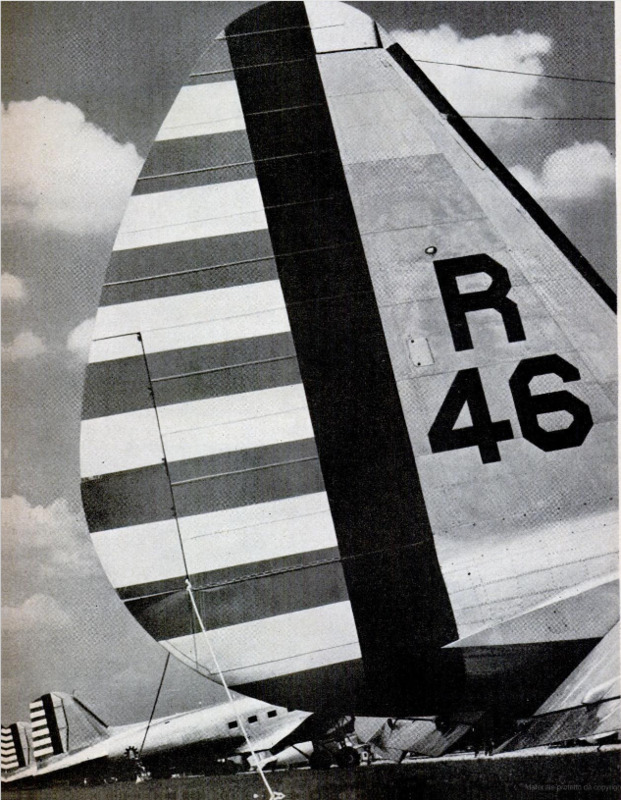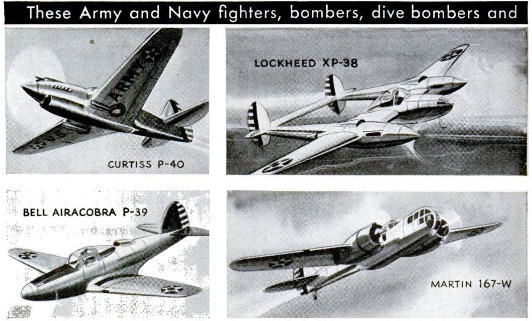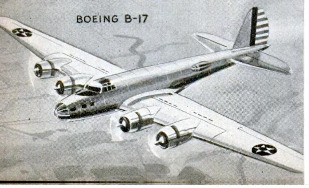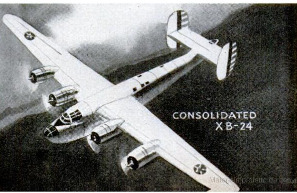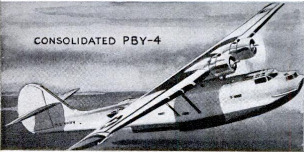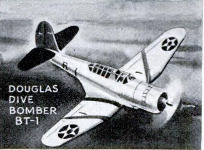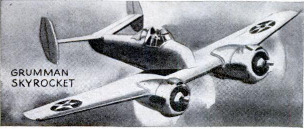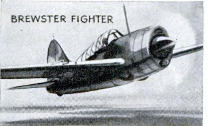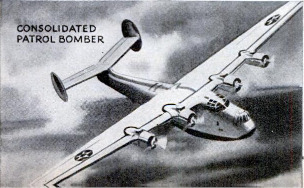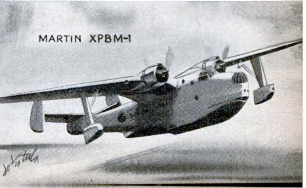-
Title (Dublin Core)
-
What is the outlook for aviation in 1941?
-
Article Title and/or Image Caption (Dublin Core)
-
Title: What is the outlook for aviation in 1941?
-
extracted text (Extract Text)
-
PRESENT indications point to 1941
as a boom year in American avia-
tion. On both the military and
civil aeronautical fronts, prospects
could scarcely be brighter—thanks to
factories glutted with British war
orders and American national-defense
contracts and to the Civil Aeronautics
Administration's pilot-training pro-
gram in the universities and colleges.
The warplane building program is
scheduled to go on at ever-increasing
tempo until the second quarter of 1942.
By that time, the National Defense
Advisory Commission estimates, the in-
dustry will have produced (since July 1,
1940) some 19,000 aircraft for our own
Army and Navy, plus 14,000 for the
Royal Air Force; simultaneously, it will
have built up its production capacity
to the point where it can turn out fight-
ing planes at the rate of 50,000 a year.
Whether there will be a continuing
market for any such production, at
home or abroad, is a question the ex-
perts seem willing to leave unanswered
until 1942. Actually, the combined air-
craft requirements of the Army and
Navy, as presently conceived for West-
ern Hemisphere defense purposes, is
less than half the 50,000 airplanes
envisaged by President Roosevelt in
his “total defense” message last May.
The C.A.A. program lays claim to
no military significance beyond that of
creating a reservoir of air-minded
youth, trained in the rudiments of fly-
ing, from which the Army and Navy
can draw candidates for their special-
ized training. This is mo longer a
“civilian theory”; it already has been
transformed by the demand for mili-
tary pilots into an everyday fact and
one which seems to be working to the
great satisfaction of the two services.
Likewise, the Army appears to be well
pleased with its now well-established
system of contracting with civilian fly
ing schools to give the majority of its
air cadets their primary training.
This experiment, and the far more
comprehensive one of the C.A.A. in
carrying out its pilot training program
through the existing facilities of civil
aviation—the struggling flying-service
operators on thousands of airports all
over the country—have been a tre-
mendous boon to the industry. What
is more, they may be the means of its
salvation in the inevitable let-down
days ahead when the present “emer-
gency" passes, when the expanding air-
craft factories of today come to an end
of their war orders and a tapering-off
of their defense contracts. Perhaps,
when that time arrives, the thousands
of young men and women whom the
C.A.A. has taught to fly will constitute
such a market for civil aircraft that a
thriving industry can be kept alive
without the stimulus of abnormal mili-
tary buying.
" WE HAVE big orders and we are get-
the the materials we need to fill
them. We are expanding our plant, install-
ing new machines, training new workers.
All the other airplane manufacturers are
doing the same thing. Mass production will
become a reality just as soon as these new
facilities can be put to work. And with
mass production we'll get the job assigned
us done on time.”
That's the way the aircraft-production
situation looks to an official of the Glenn L.
Martin factory, Baltimore, Md.—a man who
is on the industry's firing line in its battle
against time to build up our inadequate air
defenses. How does it look in Washington,
G.H.Q. of the colossal defense program?
Right now the country’s aviation experts
are devoting all their time to turning out the
33,000 bombers, dive bombers, and pursuit
ships—19,000 for our own Army and Navy
and 14,000 for Great Britain—which they
have estimated American factories can pro-
duce by April 1, 1942.
Plant expansion, financed wholly or
in part, directly or indirectly by the
Government on terms which protect
the manufacturers against loss when
the present emergency is over, is go-
ing ahead. The Curtiss-Wright Cor-
poration is building new plants near
Columbus and Cincinnati and is en-
larging its Buffalo, St. Louis, and
Paterson, N. J., factories. Similar
expansion has been accomplished and
is still under way at United Aircraft
Corporation's Pratt & Whitney engine
and Hamilton Standard propeller di-
visions, in East Hartford, Conn., and
at its Vought-Sikorsky airplane di-
vision at Bridgeport, Conn. The
Martin company is increasing its floor
space from 1,350,000 square feet to
almost 4,000,000. North American
Aviation is supplementing its Los
Angeles plant with a new one in Dal-
las. Douglas, Boeing, Consolidated,
Lockheed, Vultee and all the other
companies are making planes for the
Army and Navy.
Building aircraft engines is a more
complicated job than turning out the
airplanes themselves, and engine pro-
duction cannot be increased with the
same rapidity as that of aircraft. Al-
ready the public has seen the spec-
tacle of combat planes coming off the
production line days and weeks ahead
of the engines to be installed in them;
of motorless Curtiss P-40 pursuit ships
collecting under circus tents and other
temporary shelter at Buffalo, waiting
for their Allison engines; of Boeing
flying fortresses cluttering up the air-
port at Seattle waiting for Wright
Cyclone motors, or being stripped of
their power plants after flying to an
Army field so that the engines could
be taken back to the factory and in-
stalled in a succeeding bomber.
Seen in flight, the modern military
airplane has a look of sleek simplicity,
yet it is one of the most complicated
weapons man has ever evolved. Its
14,000-0dd parts come from several
hundred different sources of supply;
the knowledge and skill of scores of
sciences and crafts go into it.
In the Martin plant, after the de-
sign of a new plane is approved, it is
drawn out, full size, on coated alumi-
num-alloy sheets. When every detail
is complete, the sheets are photo-
graphed by a huge camera of special
design, which is later used as a pro-
jector to reproduce the drawings, full
size or to any desired scale, on any
material.
Tool-design engineers decide on the
machine tools and dies needed to
make the plane's many parts. Dozens
of special machines cut and bend
metal into the shapes called for by
the drawings. A metal-stretching
press forms the whole belly of a bom-
ber fuselage over a wooden pattern in
a single quick operation—it would
take two men six hours to do that job
by old, bumping hammer-and-file
methods. A big router shapes out a
dozen sheets of duralumin at a time.
Airplane-factory assembly lines do
not move in the continuous fashion of
automobile assembly lines, but rather
by stages. The standards of work-
manship are too high and the stake of
human life too great for the speed of
automobile production.
As parts move from stage to stage
on the production line they are joined
together in sub-assemblies until at
last they become wings or tails or
nose sections. For the sake of acces-
sibility, the whole front end of a bomb-
er fuselage is built in halves, with con-
trols and other interior fittings in-
stalled, and these halves are then
riveted together. As the various sec-
tions of the plane near completion,
they converge in a final assembly line
and are joined together as a complete
ship. The engines are then installed,
fuel and oil lines and electrical wiring
are hooked up, controls are connected,
and the airplane is ready for flight.
The job of supplying the United
States and its friends with 3,000
planes a month is a prodigious one,
yet “Big Bill” Knudsen, the Defense
Commission's production codrdinator,
believes that it can be done. He has
inspired the confidence of the entire
aviation industry by cutting red tape
and eliminating lost motion, until
now even the industry's professional
pessimists see light ahead.
-
Language (Dublin Core)
-
C. B. Allen
-
Date Issued (Dublin Core)
-
1941-01
-
pages (Bibliographic Ontology)
-
72-75
-
Rights (Dublin Core)
-
Public domain
-
Archived by (Dublin Core)
-
Sami Akbiyik
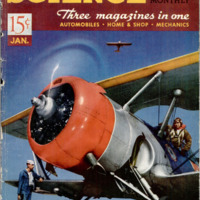 Popular Science Monthly, v. 138, n. 1, 1941
Popular Science Monthly, v. 138, n. 1, 1941

